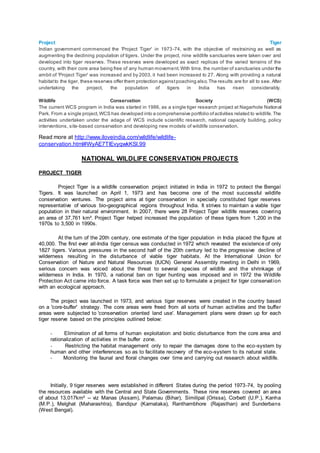The Indian government launched Project Tiger in 1973 to protect declining tiger populations by establishing tiger reserves across representative biogeographic regions. This increased tiger populations from 268 in 9 reserves in 1972 to over 1,000 in 28 reserves by 2006. Other notable wildlife conservation projects launched in India include Project Elephant to protect elephant habitats, Project Hangul to protect the endangered Kashmir stag, and the Indian Crocodile Conservation Project which successfully increased crocodile populations through breeding and reintroduction programs.











